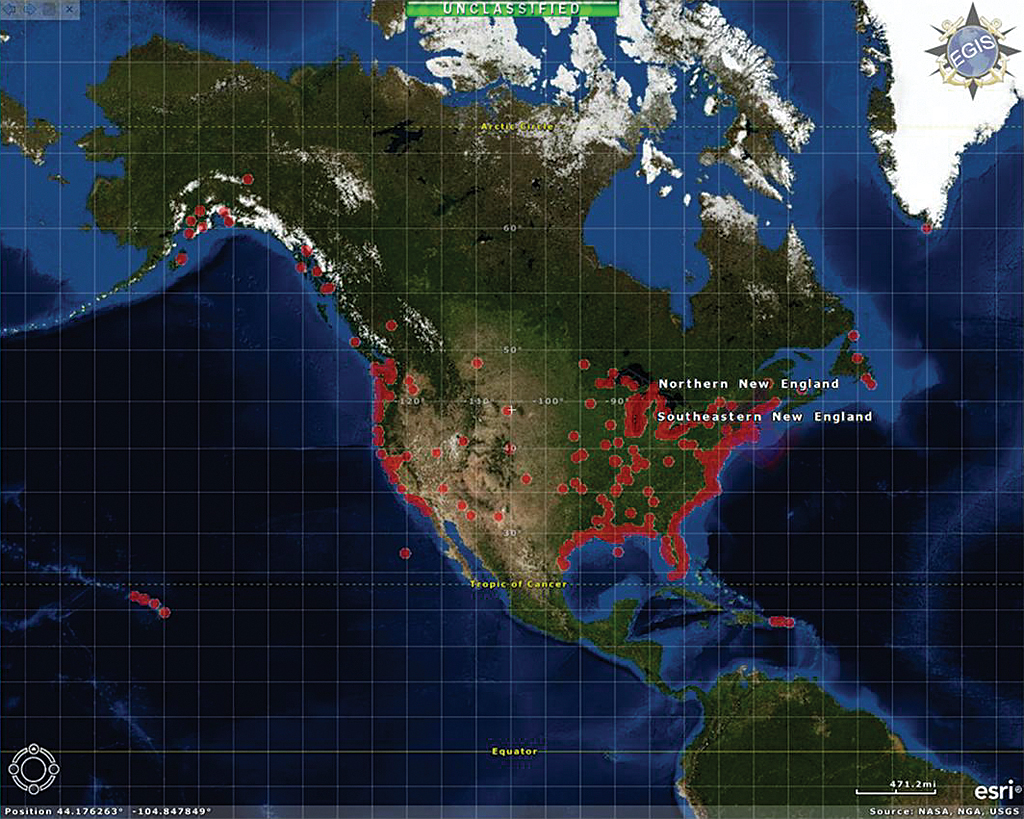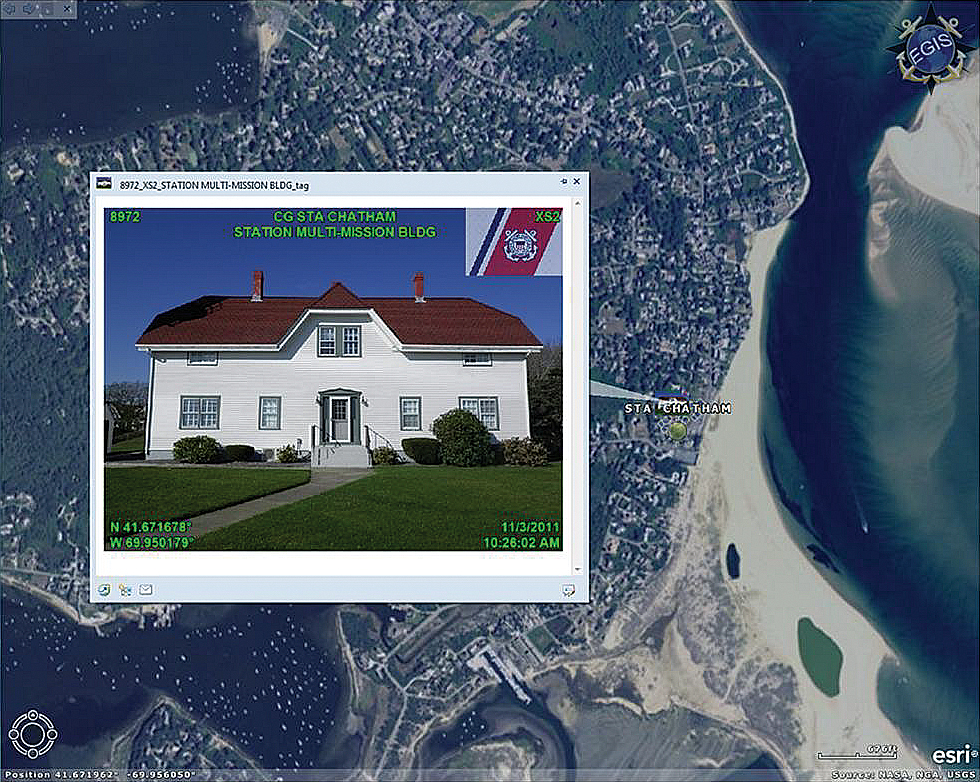
USCG validates real property assets
In 2012, the United States Coast Guard (USCG) had to complete an enterprise-wide shore infrastructure real property audit within a year to comply with a new federal act. The agency completed the audit within the required time frame using a validation process that incorporated ArcGIS and GPS.
Changing Audit Requirements
The Chief Financial Officers (CFO) Act of 1990 established chief financial officers in major federal agencies and enhanced federal financial management activities to include annual audits of financial statements.
Building on the CFO Act, president George W. Bush issued Executive Order 13327 in 2004, which focused on federal real property asset management and stated, “The policy of the United States is to promote efficient and economical use of America’s real property assets and to assure management accountability for implementing federal real property management reforms.”
This order created the Federal Real Property Council (FRPC) to establish and enforce more stringent annual real property reporting requirements. The council outlined no less than 26 data elements that must be captured for uniform reporting of federal real property assets.
“The provisions of those directives required that federal agencies document the existence and completeness of all real property inventories,” said Peter Spinella, real property specialist at USCG. “This means the Coast Guard must thoroughly demonstrate knowledge of its real property holdings and have recent photographic evidence of each asset.”
Previous shortcomings in accounting for real property contributed to failed attempts by the USCG to pass CFO Act audits. The USCG made a commitment to the Department of Homeland Security (DHS) to pass the 2012–2013 audit. This required validation of the USCG’s real property inventory of more than 50,000 individual assets at locations from Maine to Guam before June 2013.
Forming a Plan
The USCG developed a real property Asset Enrollment Template (AET) for capturing the information necessary to meet CFO Act/FRPC documentation standards. Each real property asset in the portfolio has an associated AET on file.
Each AET contains data about an asset that includes its real property unique identifier (RPUID); age; historic cost; unit of measure; and size along with a current photograph containing an embedded date stamp, RPUID, and the asset’s geographic coordinates. These are just a few of the 26 data elements that the FRPC requires for uniform reporting. The status of each file, from creation to final approval, is tracked in Microsoft SharePoint.

Initially, the methodology for gathering and processing the data required to generate an AET was unnecessarily arduous. It used professional surveyor-grade GPS receivers and Microsoft Office software—two products not designed to interoperate—to crudely layer GPS information onto digital photos.
To increase work efficiency, the USCG Civil Engineering unit in Providence, Rhode Island, researched and prototyped the use of a GPS-enabled camera and its accompanying software application. The GPS-enabled cameras easily and quickly acquired geotagged photos, and their use was adopted throughout the USCG as the most efficient method for acquiring AET photo documentation.
Capturing Big Footprints
In addition to photo-processing challenges, Spinella and his team also discovered that measuring larger assets using traditional methods, such as measuring wheels and tapes, significantly limited efficiency. With so many large assets to validate, this threatened to delay completion of the DHS audit.
The USCG had to develop a new method to gauge the area of its large-footprint real property holdings. They started by building a geodatabase for the site using the correct state plane and projections and creating polygons and features.
“This gave us a table so that, if we were measuring the gross square area of a roadway system, each polygon showed up in the table for that feature class,” said Spinella. “That returned not only the individual sizes but also the total square area of the roadway system.”
By demonstrating the accuracy of building and structure measurements using ArcGIS software and current aerial imagery, Spinella and his team were able to convince stakeholders that ArcGIS could determine the size of infrastructure, such as airfields and property lines, to within 5 percent accuracy, eliminating the need to physically measure large structures.
“Incorporating these two technologies into our AET production/property validation process saved thousands of man-hours and millions of dollars in travel costs,” said Spinella.
Keeping Up-to-Date
Moving forward, the USCG is currently working to establish a process to keep the property inventory data current, as normal operations and maintenance will inevitably require updates to the metadata of individual assets. Spinella and the team are currently developing the capability to give operational commanders asset visibility using ArcGIS. With the mountain of data gathered during the initial inventory validation establishing the USCG shore infrastructure real property baseline, creation of near real-time links to project and work-order databases, and new configuration control processes that hold officials accountable for unauthorized changes, the Coast Guard will be able to sustain its real property inventory in audit-ready condition.
For more information, contact Peter C. Spinella.


